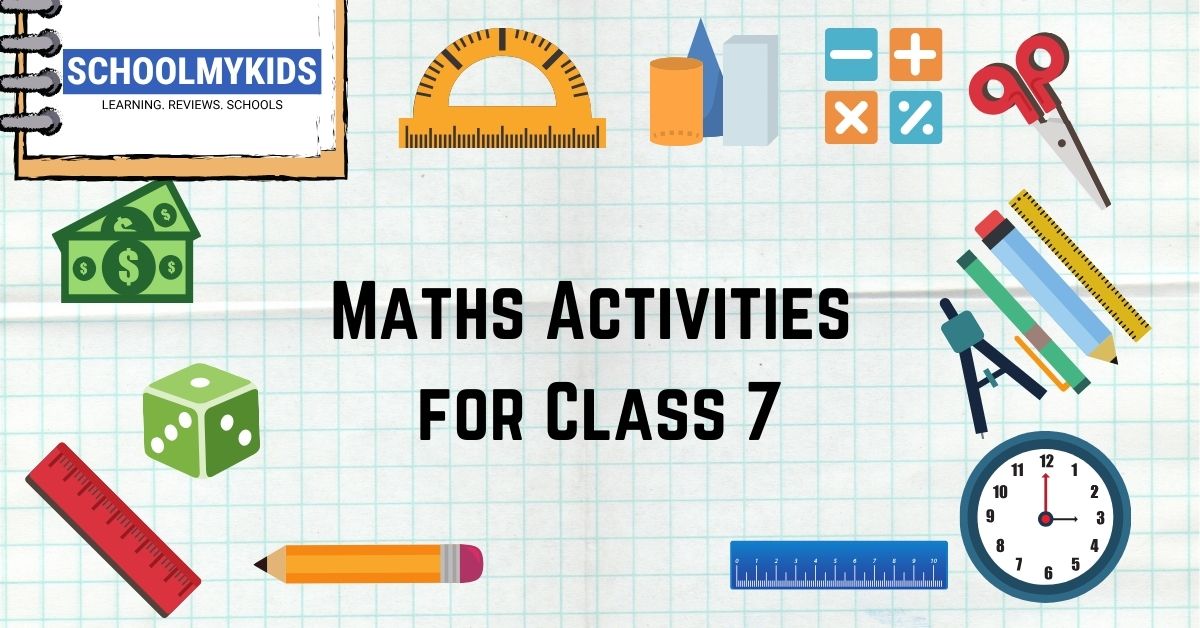Seventh grade is a pivotal point in a student’s mathematical journey. They’re leaving the comfort of familiar territory – whole numbers, basic operations – and venturing into exciting but sometimes intimidating new areas like ratios, proportions, and the gateway to algebra. While these concepts hold the potential to unlock a world of problem-solving and logical thinking, they can also feel abstract and challenging for some students.
Imagine Sarah, a seventh grader who loves sports but struggles with negativity when it comes to math. Numbers dance on the page, and equations seem like cryptic messages from another world. This is where the magic of engaging activities comes in. They can transform Sarah’s experience from frustration to fascination.
This article equips teachers with a toolbox of interactive activities specifically designed to make class 7 math not just effective but also fun and collaborative. By incorporating these playful approaches, you can transform Sarah’s frown into a smile, replace fear with confidence, and foster a love for the subject that will stay with her throughout her academic career.
The Power of Playful Learning
Games and activities tap into the natural curiosity and competitive spirit that most seventh graders possess. They provide a safe space to experiment, make mistakes, and learn from them without the pressure of a test looming overhead. This fosters collaboration, communication, and critical thinking skills, all vital for math success.
Think of it like this: Remember the thrill of winning a board game with your friends? That same sense of accomplishment can be harnessed in the classroom when students work together to solve a challenging problem or compete in a friendly math game.
Let’s Explore!
Now, let’s dive into some specific activities that cater to various class 7 math topics, transforming Sarah’s classroom from a battlefield to a playground:
1. Operations with Integers
- Integer Feud goes Primetime: Ditch the traditional lecture and channel the excitement of a popular game show. Divide the class into teams with catchy names (think “The Positive Powers” vs. “The Negative Negaters”). Write positive and negative integers on the board – these are our “survey questions.” Teams take turns choosing a number and answering an operation-based question about it (e.g., “What is -8 + 5?”). Correct answers earn points, while incorrect ones lead to playful (but educational!) consequences, like having to explain their reasoning or losing a turn. The team with the highest score at the end gets bragging rights and a small prize (think extra recess or a homework pass).
- Number Line Race: Get Active! Forget textbooks for a moment. Draw a large number line on the floor or use a long piece of rope that stretches across the classroom. This is our “math racetrack.” Divide students into pairs and provide them with flashcards containing integer values. The teacher acts as the race announcer, calling out addition or subtraction problems. Each pair must jump or move to the answer on the number line.The first pair to reach the correct location wins the round. This activity gets students moving, reinforces their understanding of the number line, and injects a healthy dose of competition.
2. Ratios and Proportions
- Recipe Ratios – Cooking Up Math Magic: Who doesn’t love a delicious treat? Bring in recipes from different cultures (think chocolate chip cookies from America or samosas from India). Students work in groups to analyze the ratios of ingredients in the recipe. For example, if the recipe calls for 1 cup of flour and ½ cup of sugar, students can calculate how much of each ingredient they would need to double or triple the recipe. This activity not only integrates math with real-world applications but also allows students to explore cultural diversity through food.
- Ratio Scavenger Hunt – Unleash the Inner Detectives: Imagine the classroom transformed into a secret garden of mathematical clues! Hide objects around the room with specific ratios written on them (e.g., 2:1, 3:4). Students work in teams, searching for the objects. Once they find an object, they must calculate the missing quantities based on the ratio. The first team to find all the objects and calculate the missing quantities correctly wins a prize. This activity encourages critical thinking, deduction, and reinforces understanding of ratios.
3. Fractions and Decimals
- Fraction Dominoes – Building Bridges with Math: Remember the classic domino game? Here’s a mathy twist! Create dominoes with fractions written on each half. Students must match dominoes where the fractions add up to a whole number (e.g., 1/2 + 1/2) or have a common denominator (e.g., 2/4 + 3/4). This activity helps solidify fraction addition and equivalent fractions in a fun and interactive way.
- Decimal Board Game – Roll the Dice, Conquer the Decimals! Design a board game with squares marked with decimals. Students roll a die and move their token the corresponding number of tenths or hundredths (depending on the die). Landing on specific squares might involve answering questions about comparing decimals, rounding, or adding/subtracting decimals. Think of it like a classic board game with a mathematical twist!
4. Geometry and Measurement
- Tangram Challenge – Unlocking the Secrets of Shapes: Introduce tangrams, seven geometric shapes (squares, triangles) that can be combined to form various silhouettes. Divide the class into groups and provide them with tangram sets. Challenge them to recreate specific shapes displayed on the board or create their own designs. This activity promotes problem-solving and spatial reasoning skills in a visually engaging way. Imagine the satisfaction of seeing a complex design emerge from seemingly simple shapes!
- Mystery Perimeter and Area – Math Detectives on the Case: Hide objects with regular shapes (square, rectangle, triangle) around the classroom. Students, our “math detectives,” measure the sides of the objects and calculate their perimeter and area. They then use clues about the object’s size and shape to identify it. This activity integrates measurement with critical thinking and deduction, transforming the classroom into a giant math mystery to be solved.
5. Pre-algebra
- Variable Relay Race – Teamwork Makes the Dream Work! Divide the class into teams with catchy names (think “The Equation Eliminators” vs. “The X-plorers”). Write equations with variables on the board. Each team member tackles a part of the equation (e.g., isolating the variable, substituting values). The first team to correctly solve the entire equation wins the round. This activity fosters collaboration, communication, and reinforces understanding of variables and equation manipulation in a fast-paced and exciting way.
- Modelling with Algebra Tiles – Bringing Algebra to Life! Algebra tiles can seem like an abstract concept to some students. Here’s how to make them tangible. Use algebra tiles (manipulatives representing positive and negative values) to model and solve linear equations. Students physically arrange the tiles to represent the equation and then manipulate them to solve for the variable. This provides a visual aid for understanding algebra concepts, transforming them from abstract symbols into something they can touch and move around.
Beyond the Activities
These activities are just a springboard for creating a fun and engaging math classroom. Here are some additional tips to foster a positive math learning environment for Sarah and her classmates:
- Incorporate Technology: Explore educational math games and apps that supplement classroom learning. There are a variety of options available that can cater to different learning styles and make practicing math concepts more engaging.
- Connect Math to the Real World: Help students see how math is used in everyday life, from budgeting their allowance to cooking a meal or designing a video game. This can make math feel more relevant and interesting.
- Celebrate Effort and Progress: Acknowledge students’ hard work and growth even if they don’t get the perfect answer on the first try. A positive and encouraging environment will go a long way in building confidence and fostering a love of learning.
- Make Mistakes Fun: Let students know that mistakes are a natural part of the learning process. Use them as opportunities to learn and grow.
By incorporating these engaging activities and fostering a positive learning environment, you can transform Sarah’s experience in math class. Remember, a love for math can empower students to solve real-world problems, think critically, and unlock their full potential. So, let’s turn the classroom into a playground of discovery, where curiosity is sparked, and confidence soars!.








Be the first one to comment on this story.